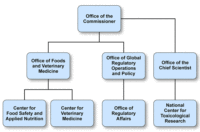Manufacturing News
FSMA: A work in progress

The work, according to Wagner, is designated Phase 1. Phase 2 is concerned with determining strategies to develop and implement the standards. Phase 3 includes monitoring and evaluating the implementation results.
Phase 2, implementing the standards, will require that FDA operate differently than it has in the past—taking a less adversarial and more supportive stance. FDA will educate before and while it regulates, says Wagner. The agency will look at a processor’s food safety culture, and that will guide FDA’s new approach in working with that processor in terms of education, outreach, technical assistance and compliance. FDA will invest in regulator training to promote consistent inspections, and investigators and subject matter experts will work together to correct problems. The agency will use robust data integration, analysis and information sharing, and will monitor public health records.
FDA’s new approach will be one of targeted, risk-based inspection models. The agency will also employ a wider range of inspection, sampling, testing and data collection activities.
FDA has received initial comments on several of the Proposed Rules and has suggested changes based on stakeholders’ and public comments. Some of the changes to the initial Proposed Rules are highlighted below as Supplemental Proposals, all published in 2014. Also, since further input from the public was solicited with a due date of December 14, 2014, some of the Supplemental Proposals listed below may be revised before they become final rules. Supplemental Proposals based on initial input include:
Preventive Controls for Human Food.
The revisions include:
- Farms that pack or hold food from other farms are not subject to preventive controls.
- The definition of a very small business has been proposed to be less than $1 million in sales; compliance dates for different categories of businesses.
- Withdrawal of the qualified exemptions process has been further clarified.
- Product testing, environmental monitoring and supplier controls should be included in the final text.
- FDA is considering whether hazards that might be intentionally introduced for economic gain should be part of the hazard analysis.
Proposed Rule for Produce Safety.
More concentration will be given to whether:
- The water quality standard and testing should be more flexible.
- The manure strategy should be further studied.
- Covered farms should be better defined.
- The withdrawal of the qualified exemptions process should be further qualified.
- Provisions on wild animals need to be clarified.
- Compliance dates for very small businesses should be extended to four years; others should be lengthened.
Proposed Rules for Preventive Controls for Animal Food.
Key revisions include:
- Current good manufacturing practices regulations should be made more applicable to animal food.
- The definition of very small businesses is proposed to be less than $2.5 million in annual sales.
- Withdrawal of the qualified exemptions process should be further developed.
- Potential regulatory language for product testing, environmental monitoring and supplier controls is offered for public comment.
- Economically motivated adulteration language has been proposed.
- Discussion of whether feed mills associated with farms should be subject to the proposed rule.
- Compliance dates for very small businesses have been changed.
Proposed Rule for Foreign Supplier Verification Programs for Importers of Food for Humans and Animals.
The following revisions are being considered:
- Hazard analysis—FDA is proposing a more comprehensive evaluation of food and supplier risks.
- Supplier verification—FDA is proposing a revision that is a hybrid of the two options in the originally proposed rule.
- Consistency with other FSMA rules—Change the definitions of very small importer and very small foreign supplier to having no more than $1 million in annual sales compared to the previous limit of $500,000.
For more information, visit FDA’s FSMA page at www.fda.gov/fsma.
Looking for a reprint of this article?
From high-res PDFs to custom plaques, order your copy today!








